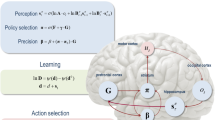Abstract
A method is described for estimating the time intervals between transactions in speech-compression algorithms based on a complex Markov process, each state of which is a 2-parallel Markov process that describes the “competition” between the source of the signal that fills the buffer and the receiver of the signal that empties the buffer. The complex Markov process is transformed into an ordinary process, whose states simulate the number of buffer cells that are filled at the current time. This makes it possible to obtain a dependence connecting the probability of failure, the amount of buffer memory, and the mathematical expectations of the times of filling and emptying the buffer.
Similar content being viewed by others
References
Ramírez, M.A. and Minami, M., Technology and standards for low-bit-rate vocoding methods, in The Handbook of Computer Networks, Bidgoli, H., Ed., 2011. vol. 2, pp. 447–467.
NATO Interoperable Narrow Band Voice Coder. STANAG 4591 C3 (Edition 1)–The 600 bit/s, 1200 bit/s, 2400 bit/s. NSA/1025(2008)-C3/4591.
Korolyuk, V. and Swishchuk, A., Semi-Markov random evolutions, Semi-Markov Random Evolutions, Springer Science + Business Media, 1995, pp. 59–91.
Ivutin, A.N. and Larkin, E.V., The generalized semi-Markov model of the algorithm for controlling digital devices, Izv. Tul. Gos. Univ., Tekh. Nauki, 2013, no. 1, pp. 221–227.
Ivutin, A.N., Larkin, E.V., and Kostomarov, D.S., Methodology for the formation of the Petri-Markov network for the modeling of cognitive technologies, Izv. Tul. Gos. Univ., Tekh. Nauki, 2013, no. 9-1, pp. 303–310.
Esikov, D.O., Larkin, E.V., and Ivutin, A.N., Mathematical models and algorithms for solving the problem of ensuring the stability of functioning of distributed information systems, Mat. Metody Tekh. Tekhnol., 2016, no. 2 (84), pp. 133–137.
Grigelionis, B.O., On the convergence of sums of stepwise random processes to a Poisson process, Teor. Veroyatn. Ee Primen., 1963, vol. 8, no. 2, pp. 189–194.
Markov, A.A., Propagation of the law of large numbers to quantities that depend on each other, Izv. Fiz. Mat. O-va. Kaz. Univ., Ser. 2, 1906, vol. 15, pp. 135–156.
Cleaveland, R. and Smolka, S.A., Strategic directions in concurrency research, CSUR, 1996, vol. 28, no. 4, pp. 607–625.
Ivutin, A.N and Larkin, E.V., Simulation of Concurrent Games, Vestn. Yuzhno-Ural. Gos. Univ., Ser. Mat. Model. Progr., 2015, vol. 8, no. 2, pp. 43–54.
Larkin, E.V., Ivutin, A.N., Kotov, V.V., and Privalov, A.N., Simulation of Relay-races, Vestn. Yuzhno-Ural. Gos. Univ., Ser. Mat. Model. Progr., 2016, vol. 9, no. 4, pp. 117–128.
Sundarapandian, V., Queueing Theory: Probability, Statistics and Queueing Theory, New Delhi: PHI Learning, 2009.
Author information
Authors and Affiliations
Corresponding author
Additional information
Original Russian Text © E.V. Larkin, A.V. Bogomolov, A.N. Privalov, 2017, published in Nauchno-Tekhnicheskaya Informatsiya, Seriya 2: Informatsionnye Protsessy i Sistemy, 2017, No. 9, pp. 23–28.
About this article
Cite this article
Larkin, E.V., Bogomolov, A.V. & Privalov, A.N. A method for estimating the time intervals between transactions in speech-compression algorithms. Autom. Doc. Math. Linguist. 51, 214–219 (2017). https://doi.org/10.3103/S000510551705003X
Received:
Published:
Issue Date:
DOI: https://doi.org/10.3103/S000510551705003X




